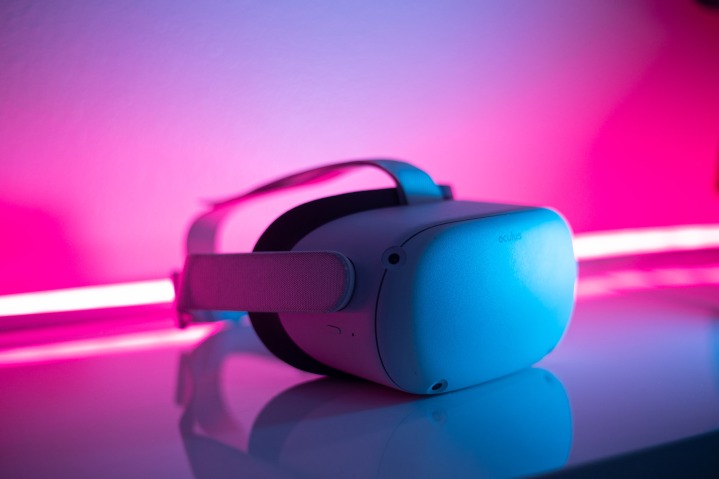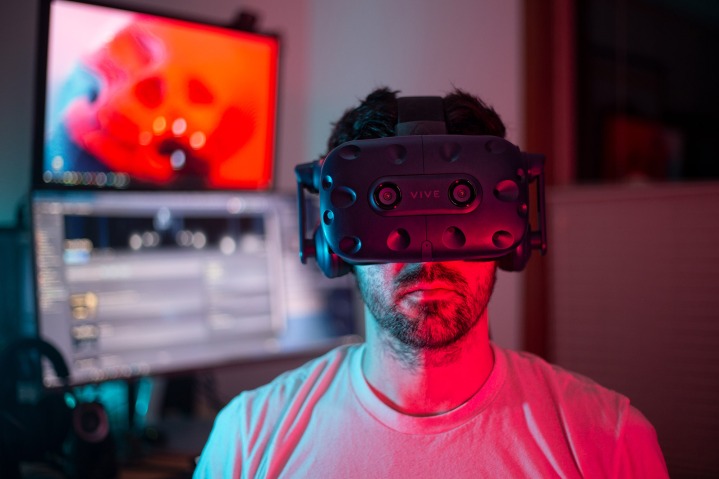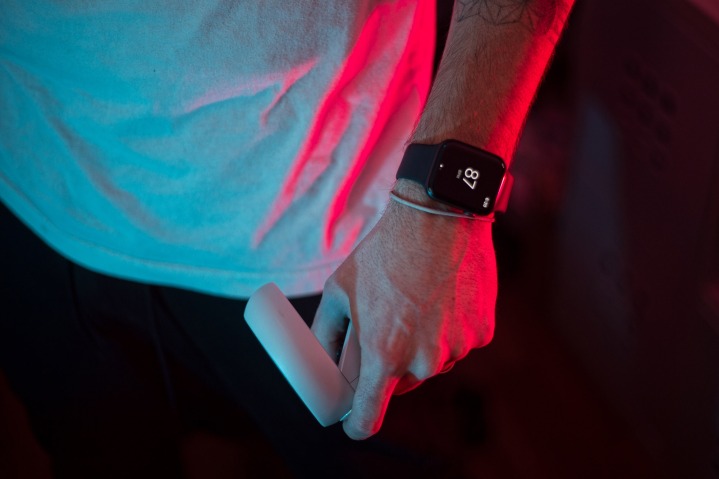Before the pandemic, the gym was always a part of my weekly routine. So as the world scrambled to horde toilet paper amid last year’s first COVID-19 lockdowns, I scrambled to create some semblance of a home gym. I wasn’t alone. Gym rats fleeing their sweaty ships created a nationwide shortage of yoga mats, dumbbells, exercise bands, and other workout paraphernalia, with marked-up prices to match.
I had a hard time stomaching nearly five times the cost of my gym’s monthly membership just to acquire a decent set of dumbbells. So I checked out Peloton (essentially a streaming spin class) Hydrow (a new take on the tried-and-true rowing machine) and Tonal (Go-Go gadget wall gym), but they all shared the same flaw: Expensive dedicated equipment. Not to mention most were back-ordered and had extended delivery times.
What I didn’t initially realize was that I already owned everything I needed. Over the past year, the same VR hardware I bought to counter boredom has also turned me on to an entirely new, addicting way of working out.
Here’s what I learned along the way, and what you should look for if you’re looking to build your own VR fitness setup.
Gaming without the guilt
As a life-long gamer, I took the plunge on VR during the beginning of the pandemic as a way to deal with all the newfound time at home. After spending nearly 100 hours wandering through Valve’s The Lab and fully completing Half-Life: Alyx, I felt a tinge of guilt as I remembered my mother chiding me to go play outside as a kid.
Staring at a screen all day wasn’t the best thing for me, and I knew it. The shame did little to deter me from my hobby, but as I hoisted a two-handed claymore above my head in Blade and Sorcery before slamming it down upon a fully plated knight, I realized I was actually breaking a sweat. In fact, I was burning more calories in a techno bowling alley and working the ribs of my opponent in Thrill of the Fight than I was with my carefully crafted interval workouts.
VR has a way of shaking up the monotony of home workouts.
So I sought out more. There are a surprising number of simple games to get the heart pumping, and if you don’t want to spend your entire workout in VR, there are many games that offer a great cardio-based supplement to a home workout. Sprint Vector, Until You Fall and Pistol Whip are great options that focus on gameplay but unintentionally garner a sweat.
VR has a way of shaking up the monotony of home workouts, as you find yourself doing squats on an alien planet, sprinting through Neo Tokyo, or knocking your opponent to the ground after a grueling four-minute bout inside the ring to the sound of thousands of fans cheering you on. There’s something special about diving into a new world every time you need to sweat, and I grew to love the lack of predictability that I once cherished about my daily gym routine.
Finding the best VR fitness hardware
Even after acclimating to VR workouts, I grew frustrated with stumbling over wires, grazing walls with punches, and pouring sweat inside my expensive HTC Vive Pro. My headset was being battered by my intense physical use, and I had to repair it more than once. I loved my Vive for all things gaming but decided to get a VR rig dedicated to fitness.

Of course, Instagram read my thoughts and quickly started serving me ads for the Oculus Quest 2. I had had initially scorned the Quest for its reliance on Facebook, but after a few hours reading up, I made the impulse purchase and hid the evidence from my wife.
After several hours of playing with the Quest’s UI, changing my home location to a spaceship and setting up my preferences, I was shocked at how good the Quest looked and felt in contrast to the Vive Pro. The device felt nearly as premium, and the display looked just as good. The only area that felt cheaper was the straps on the back of the headset, which I quickly upgraded to the Elite Strap designed by Oculus for $49.

I re-purchased Thrill of The Fight as I truly wanted to experience this wirelessly. To my eyes, it looked just as good as in the Vive, except for one distinctly clunky-looking crowd of ringside fans. No change of appearance, no lag, and no removed features. If you are willing to exclude AAA games with the standalone OS of the Quest 2, I believe you will find very little difference between headset quality.
Finding the best VR fitness app
I was standing in my living room navigating the Oculus storefront when I came across it. The $19 monthly subscription gave me pause, but I was excited to find a premium fitness app that might offer more than the games I was using. It even came with an accompanying app and social network that tracked your progression and heart-rate through a smartwatch.

From my first workout, I knew this was far beyond any fitness game I have ever played. As a player, you are guided by real coaches in a 3D experience on everything from warm-ups, form, stretching methods, and breathing. The game itself resembles a hybrid of Beat Saber and Box VR, where you hold two futuristic-looking baseball bats hitting corresponding directional orbs.
In addition to the musically driven upper body workout, you are constantly ducking into a squat or directional lunge to fit through Tron-esque 3D triangles that materialize through portals and shoot toward you. You can select the workout via coach, intensity, music genre, or duration.

I will admit, I thought with my previous VR exercise experience I could jump to the hard difficulty level immediately. I was wrong. Like, Halo Legendary wrong. The first few workouts pushed me to the point where I had to stop and mop the sweat out of my Oculus. Thankfully, Supernatural includes a complimentary rubber headset insert that makes this a little more hygienic.
Unmotivated? Try VR fitness
Everyone has different fitness goals, whether losing weight, gaining muscle, or just looking better in a bathing suit. After several hundred hours piecing together what works best for me, I can confidently say that a VR fitness routine can help you with any one of those goals.
It may not totally replace the gym in your life, but it will definitely help keep your endurance up, your core tight, and your fat percentage from creeping up after the holidays. Some people may find VR a perfect 1:1 replacement, but I found a balance of minimal home gym equipment and VR to be the best option for me.
The experience is still novel enough that it all feels like science fiction.
Even months after starting this journey, I still find myself excited every time I turn on my headset. The experience is still novel enough that it all feels like science fiction. If you have a history of gaming, you may even find yourself compelled to push yourself harder in VR than in a gym. The gaming mechanics lodged deep in your subconscious will activate in a way that treats this more like fantasy, and less like a chore.
Can I afford VR fitness?
As a novelty, VR looks expensive. As a gym substitute, it’s a screaming deal. Currently, an Oculus Quest 2 is selling for $299 at Wall Street’s most underrated video game retailer. Add the annual subscription to Supernatural for $228, and you’ve got a year of fitness for less than $500.
Compare that with Peloton, which starts at $1,895 for the bike and $39 per month, Hydrow at $1,995 and $38 per month, or Tonal at $2,995, with a $250 install, and $49 month. Sure, you won’t get the cycling, rowing, or resistance training from VR, but with the money left over you could buy a bike, boat, or some free weights to supplement it.
Editors’ Recommendations
Read the full story at: Source link
